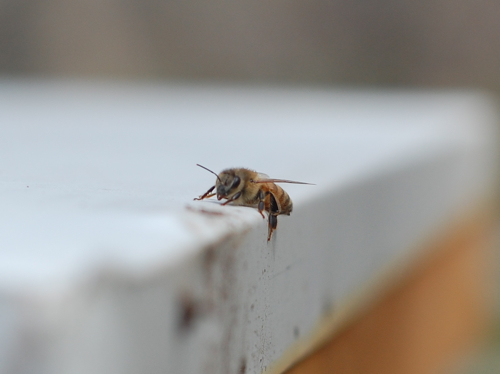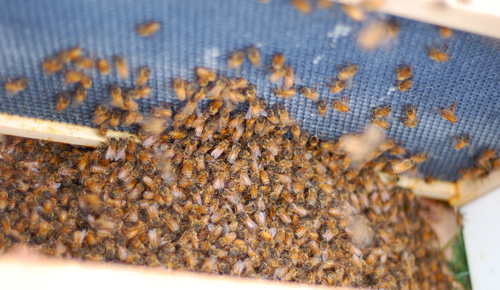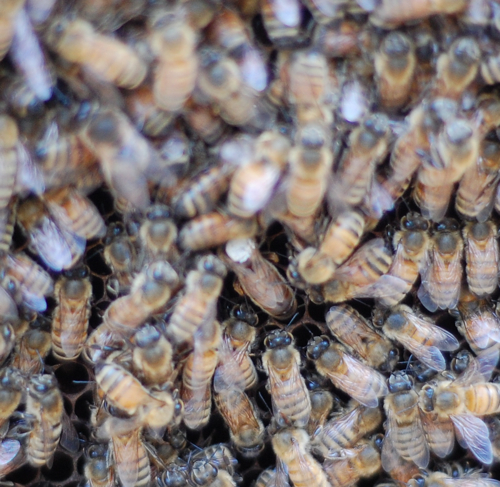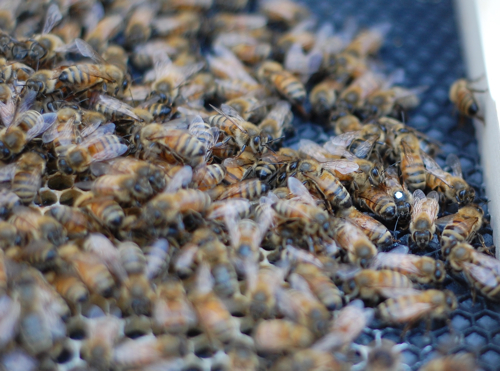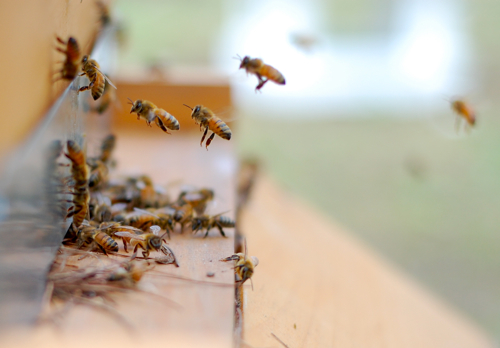I'm so bummed, I took video of Mr. Neil's first ever bee installation yesterday and I left the video card in my bee suit out at his house. Gr. I'll have to get it on Sunday.

We started our first great bee experiment this year. We're going to have a total of 7 hives: 3 packages of Russian bees (why we're trying Russians) arrived yesterday. This weekend we'll four more packages of bees: 2 Carniolans and 2 MN Hygienic bees. For some reason, all of the bee talk got incredibly naughty yesterday--decidedly not safe for work. I think it had to do with Mr. Neil. In all the years we've been keeping bees, he's never been home when we do an installation, always off doing writer/movie guy stuff/Doctor Who stuff.
I started by calling him a Bee Virgin and comparing him to girls who claim virginity because they've don't everything but vaginal intercourse (what's up with that anyway). It soon went to telling him not to be nervous about inserting his Russian package (that's big like bull) into the hive for the first time. Everybody is nervous the first time. Non Birding Bill frequently asks if I'm 13 years old and I think I am.
Neil did well, he did all three packages--it's only fair since we've done the rest. I will say that he broke new ground. No one has ever been stung when we hiving packages, Mr. Neil got stung twice! He was a brave little toaster though and continued on with no squealing or flailing of limbs.
Here's how you hive a package:

Remove 4 frames from an empty hive and block the entrance with loose leaves and grass (that encourages the bees to spend the night). We used some of our frames from old hives, some that still had drawn comb, honey and pollen in there to help give them a head start. We give all of our bees a food pail but that just sugar water. Some wax foundation and food stores helps them have a head start. And considering it's April 20 and I woke up to the sound of a snow blower removing last night's snow, I think the bees will appreciate it.

Spray the bees inside the shipping container liberally with sugar water.

Bonk the box so that all the bees hanging on the food tin and queen cage fall to the bottom in a sugar water coated clump. Use the hive tool to pry open the top of the box.

Remove the queen cage, flick off the outer attendants and put the cage in your pocket (or give it to your personal assistant, Lorraine).

Remove the feeder tin from the bee package and then spray the bees inside again with sugar water.

Shake the bees into the empty hive. I know I posted this last night, but it makes me larf.

Spread the bees gently like pizza sauce--which they will also do as they explore the hive.

Then take out the queen cage in your pocket and gently pry open the staple holding the screen and release the queen. Above, the screen is already gone but you can see our queen with her attendants. She was marked with white spot to make it easier to find her in the hive later this summer.

These Russian queens were a bit different. Normally, queens are moving fast and sometimes even attempt to fly away when we install bees. The first queen we put in wouldn't leave the cage, then crawled on Mr. Neil's glove and wouldn't get off, soon causing workers to crawl on to his glove. It took some gentle nudging to get her onto one of the frames in the hive. I'm pretty sure it was the cold that caused her to be so slow and sluggish. The second queen was fast and running around all over--must be a bit more cold weather hardy. The third queen...well...she looked dead. Mr. Neil even tried blowing warm air on her to get to her to move in the cold--a little mouth to bee resuscitation. She still looked dead. The place we ordered the Russians from is sending us a new queen. We'll have to do the slow release method with her but I'm hopeful that all will still go well with that hive.
After we installed the queen, we gently replaced the frames we took out at the start, put in the feeder pail and a pollen patty and closed up the hive. Hopefully, they will get to work drawing out comb and the hive will grow.

The bees are raring to go. One of the boxes already at the start of a small piece of comb going--I think these Russian bees are going to do great things for us this year.

Something different this time was that our bees came with a few drones--we usually only get workers and a queen. Drones don't contribute to the hive, they don't build and they really aren't around in the winter. I think these came from Tennessee so maybe it's been warm enough there to produce drones.

Because of the cold weather, the bees didn't fly around too much. If they started to fly, they soon landed. All of us had a good portion of sluggish bees on our suits when we were finished.
So, part one is complete. Part two comes this weekend.





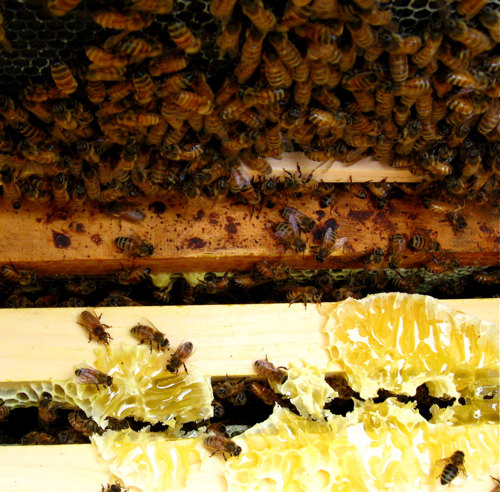 After having all of our beehives die this past winter, it's so nice to finally have a warm spring day and look in to see bees industriously tending brood and filling up empty comb. Our Italian bees are filling up hives like crazy, but the Russians and Carniolans are at a slow and steady pace.
After having all of our beehives die this past winter, it's so nice to finally have a warm spring day and look in to see bees industriously tending brood and filling up empty comb. Our Italian bees are filling up hives like crazy, but the Russians and Carniolans are at a slow and steady pace.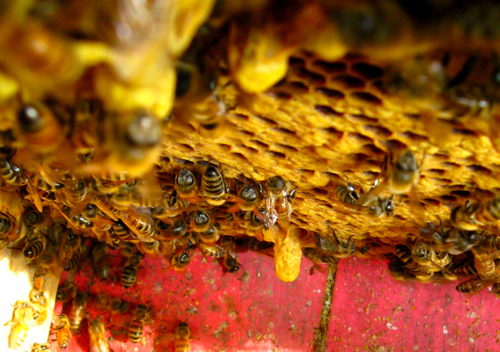 Russians are known for smaller hives and to always have queen cells on hand to replace a failing queen if need be. Even though this Russian hive had plenty of space, she had queen cells ready to go. I doubt she'll swarm, but if she does, we have an empty hive near by that they are welcome to move into. It was just Non Birding Bill and I out at the hives this time and we noted that the Russians make more noise than our other hives, but didn't bonk us to warn us they were about to sting.
Russians are known for smaller hives and to always have queen cells on hand to replace a failing queen if need be. Even though this Russian hive had plenty of space, she had queen cells ready to go. I doubt she'll swarm, but if she does, we have an empty hive near by that they are welcome to move into. It was just Non Birding Bill and I out at the hives this time and we noted that the Russians make more noise than our other hives, but didn't bonk us to warn us they were about to sting.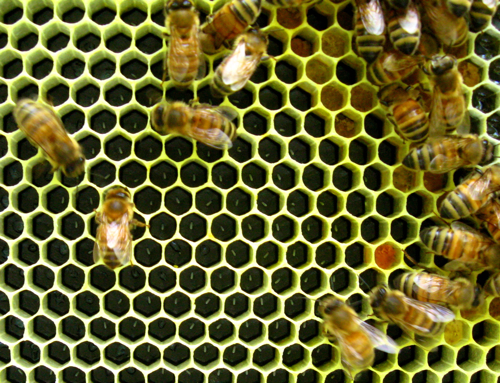
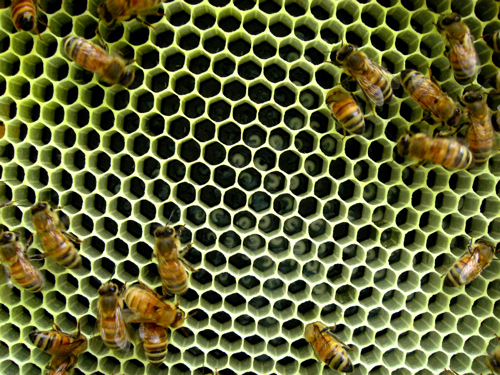
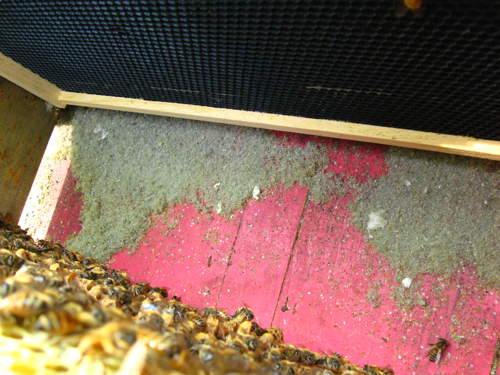
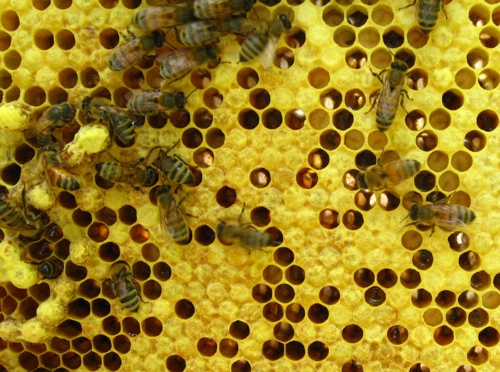
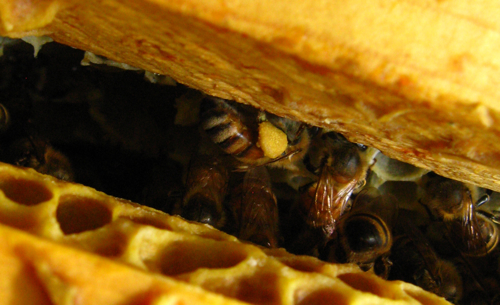
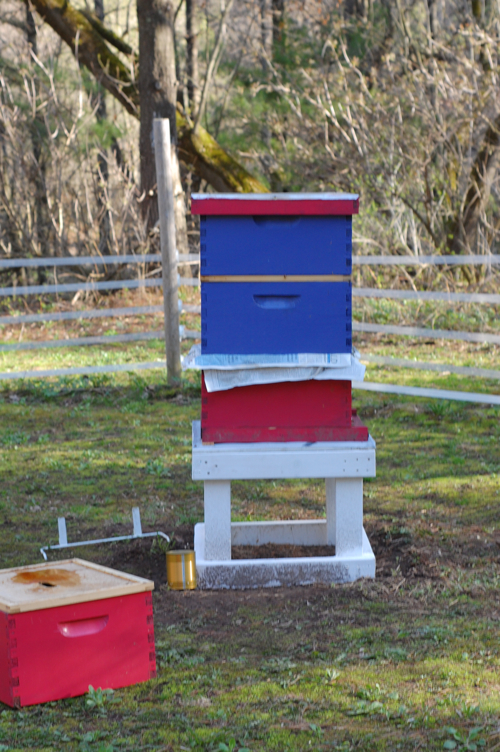
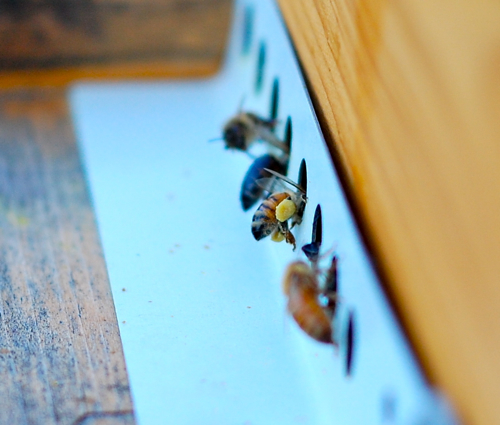
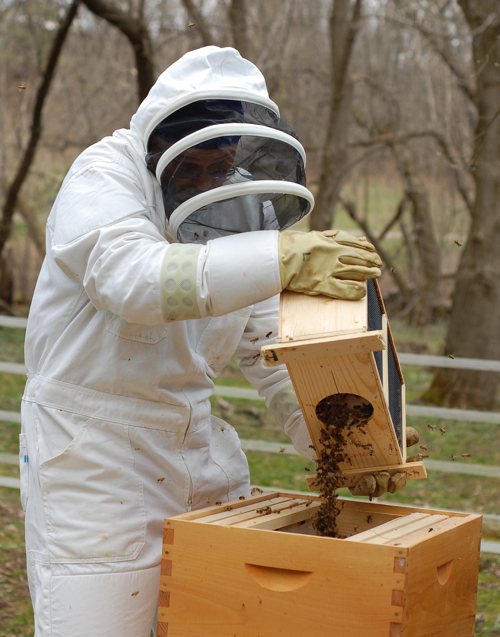 This is
This is 